17 Incredible Reasons to Visit Andalucia
There are so many reasons to visit Andalucia – its welcoming people, rich culture, lively atmosphere, and delicious food.
Andalusia is home to 8 beautiful cities (Malaga, Seville, Granada, Huelva, Cadiz, Cordoba, Almeria and Jaen) with impressive UNESCO World Heritage Sites and endless quaint and unique towns and villages worth visiting.
If you haven’t made it to Southern Spain yet, or it’s been on your bucket list for a while, in this guide, I am going to tell you all the reasons to visit Andalucia and tips from a local to make the most of your time in my region.

This post contains affiliate links, and as an Amazon Associate, I earn from qualifying purchases. If you click through and purchase something, I receive a small commission on the price at no extra cost to you. This helps me keep the content up to date and make other improvements to the blog.
Top reasons to visit Andalucia
1. Experience the birthplace of flamenco
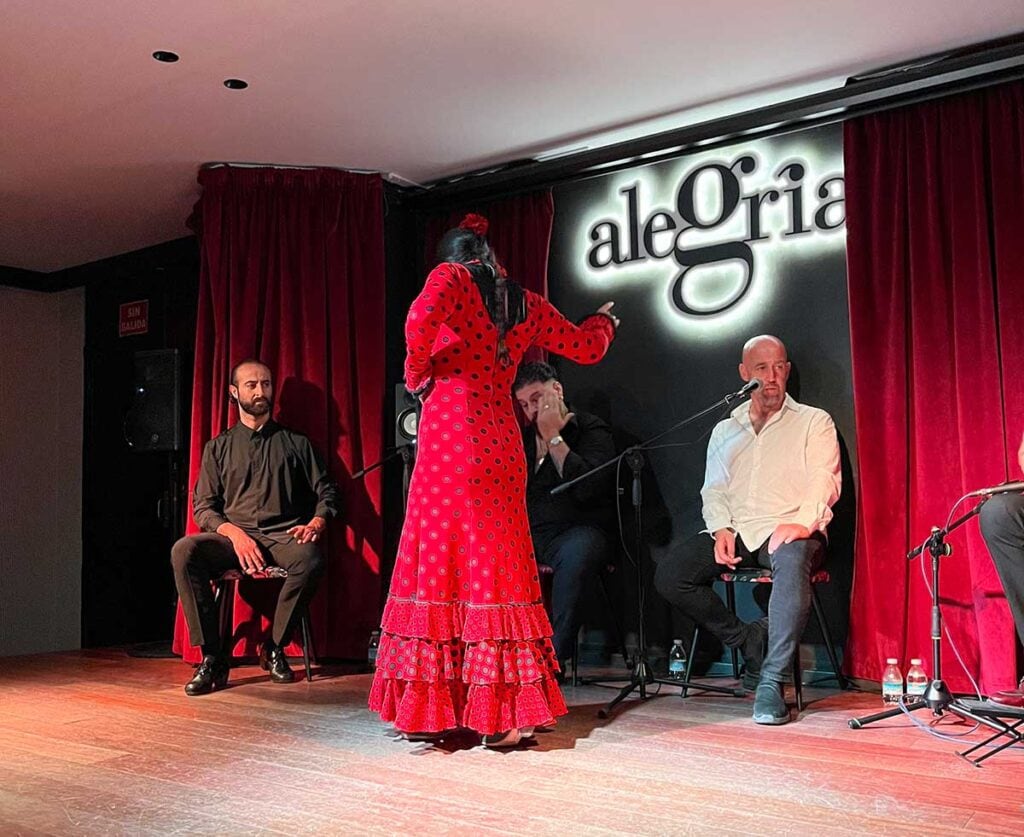
Andalucia is the synonym for flamenco dance and music, and nowadays, Seville is considered the best place to visit a flamenco show.
The history of flamenco dates back to the 15th century when gipsies (Gitanos) came to the Iberian Peninsula. They adopted different folk dances as they travelled around, and flamenco emerged from this. However, flamenco was more than a dance; it was an identity.
It wasn’t until the 19th century that flamenco was commercialised and transmitted to cafes and bars that showed live flamenco shows. Finally, it was considered a national art in Franco’s dictatorial years.
If you’re into the history of flamenco, you must visit the Museum of Flamenco Dance in Seville.
2. Unique and diverse landscapes

Southern Spain’s landscapes differ from those of the islands and Northern Spain.
They’re characterised by being dry due to the warmth, so you’ll find fewer green landscapes, but you can see volcanic rock formations, breathtaking cliffs, arid desserts like the one in Almeria, and wildlife.
Despite the warm temperatures, not every place in Andalucia is the same. You can experience the snow in the mountains, like Sierra de las Nieves Natural Park in Malaga and the Sierra Nevada in Granada.
In addition to this, the beaches in Andalucia are incredible too – rocky beaches, virgin beaches, golden sand beaches…
The Costa del Sol and Costa de la Luz are popular coasts, but you can find different types of beaches that suit everyone’s preferences in other Southern Spain locations.
Just imagine a view of the coastline with snowy mountain peaks as the background. Isn’t it magical?
3. Delicious traditional food

The gastronomy in Andalusia is very diverse, despite the fact that many people only associate Andalusia with fresh fish and seafood due to its numerous coastal cities.
Andalusian traditional dishes are influenced by previous civilizations and cultures, such as the Moorish culture. For example, you’ll find key ingredients like paprika, saffron, almonds and sugar cane, which the Arabs brought.
Andalusian cuisine offers a good range of dishes, from fried fish and refreshing cold soups to hearty stews and mouthwatering desserts and sweets.
Some of the most popular dishes in the region are gazpacho (cold tomato soup), pescaito frito (a mix of fried fish), caracoles (snails) and tortas locas (a puff pastry cake filled with delicious creamy custard topped with orange frosting).
You can’t visit Andalucia without trying at least a traditional dish! What’s more, another great thing about Andalucia food is that when you order a drink (alcoholic or non-alcoholic) in a bar, you receive a tapa for free!
If you’re travelling on a budget, you can easily eat well without spending much money in fancy, expensive restaurants.
4. Beautiful beaches

There’s no doubt that Southern Spain has some of the best beaches in Spain. No matter what coastal city you visit, you’ll find a beautiful beach.
If you go to Costa del Sol, head to Nerja for crystal clear water beaches that are perfect for snorkelling, and if you go to Almeria, don’t miss out on the opportunity to visit Cabo de Gata for virgin and unique beaches and the list of great beaches goes on.
Local Tip
Don’t go to the beach on a Sunday in the summer. This is the busiest day as most locals don’t work on a Sunday and go early to the beach to spend all day with their friends and family there. Instead, go to the beach on weekdays if possible.
5. Incredible UNESCO World Heritage Sites
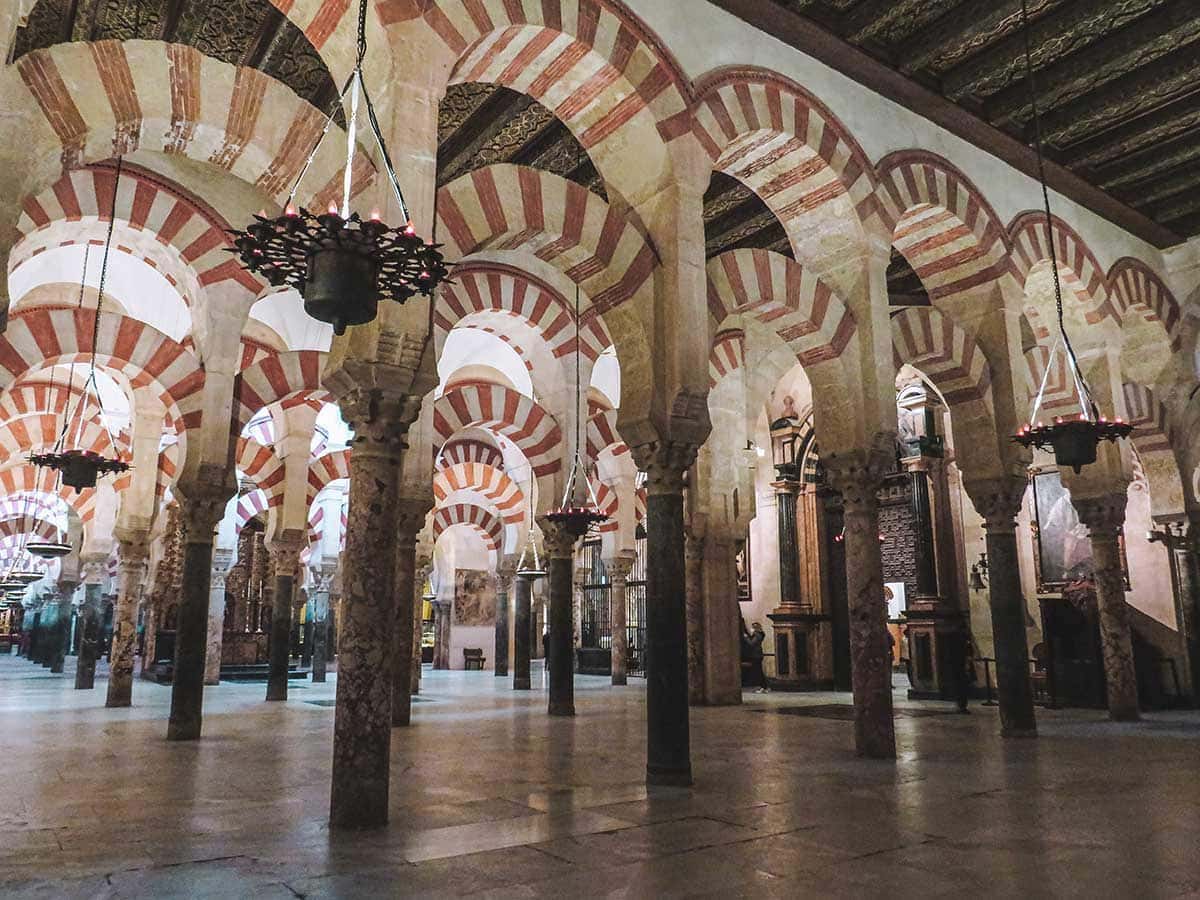
There are 7 UNESCO World Heritage Sites in Andalucia, each unique and worth adding to your Andalucia bucket list. Some of these can be easily considered some of the best UNESCO World Heritage Sites in Europe.
One of the most well-known nationally and internationally is the Alhambra in Granada. It’s visited by more than 2 million people every year, and there is no doubt why travellers love this historical landmark – its detailed and unique Moorish architecture, breathtaking views of Granada, and history.
In addition to the Alhambra, these are other UNESCO World Heritage Sites you may want to add to your Spain bucket list:
- Cathedral, Alcázar and Archivo de Indias (Seville)
- Renaissance Monumental Ensembles of Úbeda and Baeza (Jaen)
- Doñana National Park (Seville, Cadiz and Huelva)
- Antequera Dolmens Site (Malaga)
- Caliphate City of Medina Azahara (Cordoba)
- Historic Centre of Córdoba (Cordoba)
6. Excellent golf courses

Those who love golf must visit Andalucia, and more specifically Costa del Sol, as it’s one of the best locations to play golf in Spain.
The sunny weather conditions are perfect for playing golf all year round, and there have been golf tournaments and competitions in the area, too.
If you’re excellent at golf, you’ll love the variety of courses you can find here, and if you’re a beginner, don’t worry because plenty of schools and academies offer lessons to all ages and levels.
7. Breathtaking hikes

Northern Spain has famous hiking trails like Camino de Santiago (St James’ Way), but Andalucia also offers incredible routes for all levels.
These hiking trails are different from those in the north of Spain due to the vegetation affected by the warm weather, so expect drier landscapes. However, they are also worth checking out.
Hiking in Andalucia is amazing; expect a variety of landscapes – beautiful coastlines, rivers, waterfalls, streams and cliffs.
The most popular hiking trail is Caminito del Rey in the province of Malaga. This hike was once considered one of the most dangerous in the world! Now, you don’t need to worry about this because the path is adapted for hikers.
The adrenaline and views of the gorge you get when you go on this hike are memorable.
Other well-known hiking trails in Andalucia are Mulhacen in Granada, Río Chillar in Malaga and Pico Terril in Seville.
Local Tip
If you plan to go on the Caminito del Rey hike, book your tickets in advance. You’ll sometimes find that there aren’t tickets for the next two months, so the earlier you book, the better.
8. Warm weather
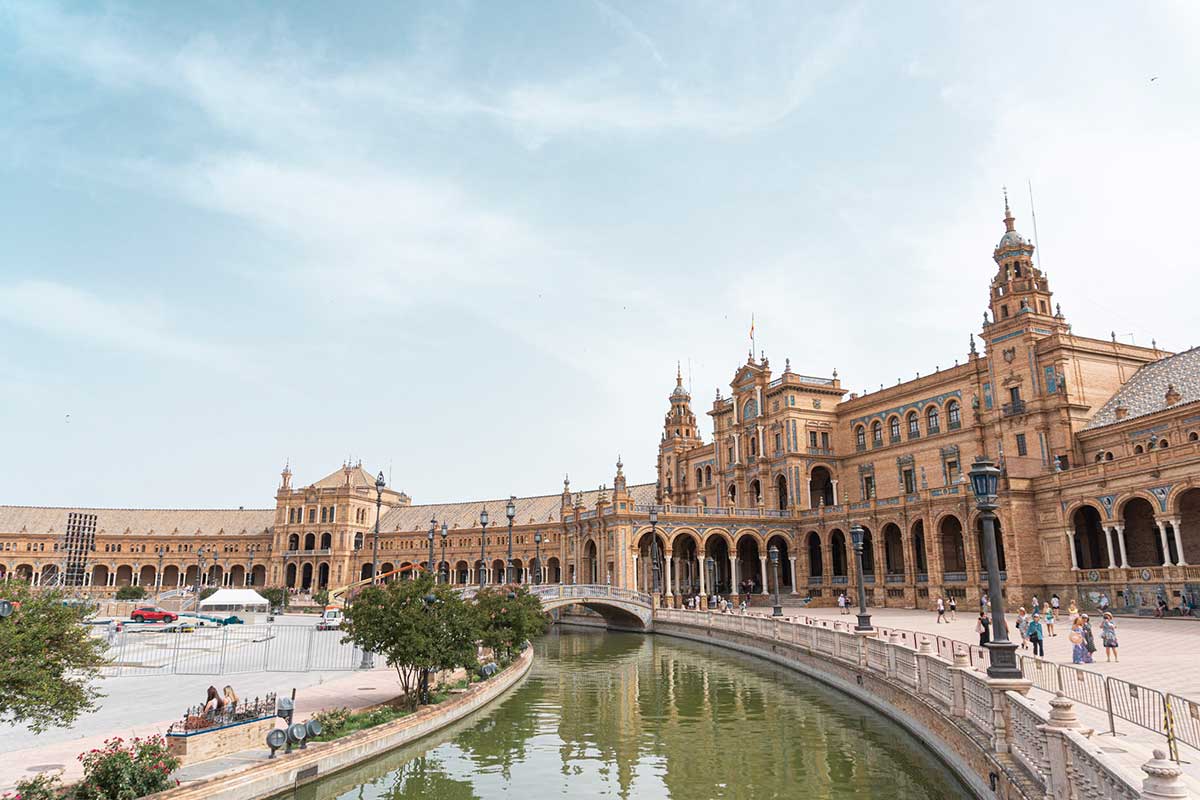
One of the reasons why the south of Spain is a top destination is because of the warm and sunny weather almost year-round.
This is why places like Malaga are known as Costa del Sol (Coast of the Sun), but there are other coasts like Costa de la Luz (referred to as the coast side in Cadiz.)
Southern Spain has milder temperatures during winter in comparison to Northern Spain, which makes it a great winter sun destination too.
Having said so, you also need to know that there are rainy days and some cities are colder than others in winter. For example, cities near the coast are hotter than those located close to the mountains, and there is even snow in some of these mountain destinations.
Although warm temperatures sound incredible to many people, including you and me, the heat isn’t for everyone. Andalucia reaches very high temperatures during the summer (up to 42 degrees Celsius), which makes it a good place to be on the beach or pool but certainly not to sightsee or hike.
9. Passionate events and fairs

Many big events and fairs take place in Andalucia all year round, but especially in spring and summer. For example, the Three Kings Parade, Semana Santa processions and the popular Seville fair, to name a few.
These are great events in which you can get a taste of the local culture and its unique traditions.
In addition to these big events, many towns and small villages have their fairs. One of my favourite small fairs is the one in Fuengirola, Malaga.
It is called “Feria de Los Pueblos de Fuengirola”, and since this town is home to many expats, you can find food and drink stalls from different parts of the world.
If you want to experience one of these traditional events, check out the tourism board calendar of the place you’ll visit. Most of these events take place in late spring and summer, but you never know; there may be a small event or concert you’d like to attend!
10. Beautiful whitewashed towns

Quaint and whitewashed towns in Andalucia are like no others in Spain. Their narrow streets with pebble paths, houses decorated with beautiful bright flowers like bougainvillaea, local independent shops with unique souvenirs and alfresco terraces to enjoy delicious tapas.
Not only are these towns picturesque, but they are also great for discovering Andalusian culture and lifestyle.
Many of these towns are often referred to as “Pueblos Blancos”, and they include a series of white towns and villages that go from the northern part of the provinces of Cádiz to Málaga.
Some of these charming whitewashed towns you don’t want to miss are:
- Setenil de las Bodegas. It’s known for its houses and other buildings built underneath the rocky mountains.
- Ronda. It’s known for Puente Romano, its spectacular historic bridge perched on two sides of the deep El Tajo canyon.
- Mijas Pueblo. It’s known for its charming atmosphere, incredible views of the coastline, and donkeys.
- Frigiliana. It’s known for its picturesque whitewashed buildings and pebbled streets. It’s even considered Spain’s most beautiful and well-preserved village.
- Vejer de la Frontera. It’s known for its mountain views, beautiful squares, former mills and castle.
11. Welcoming locals
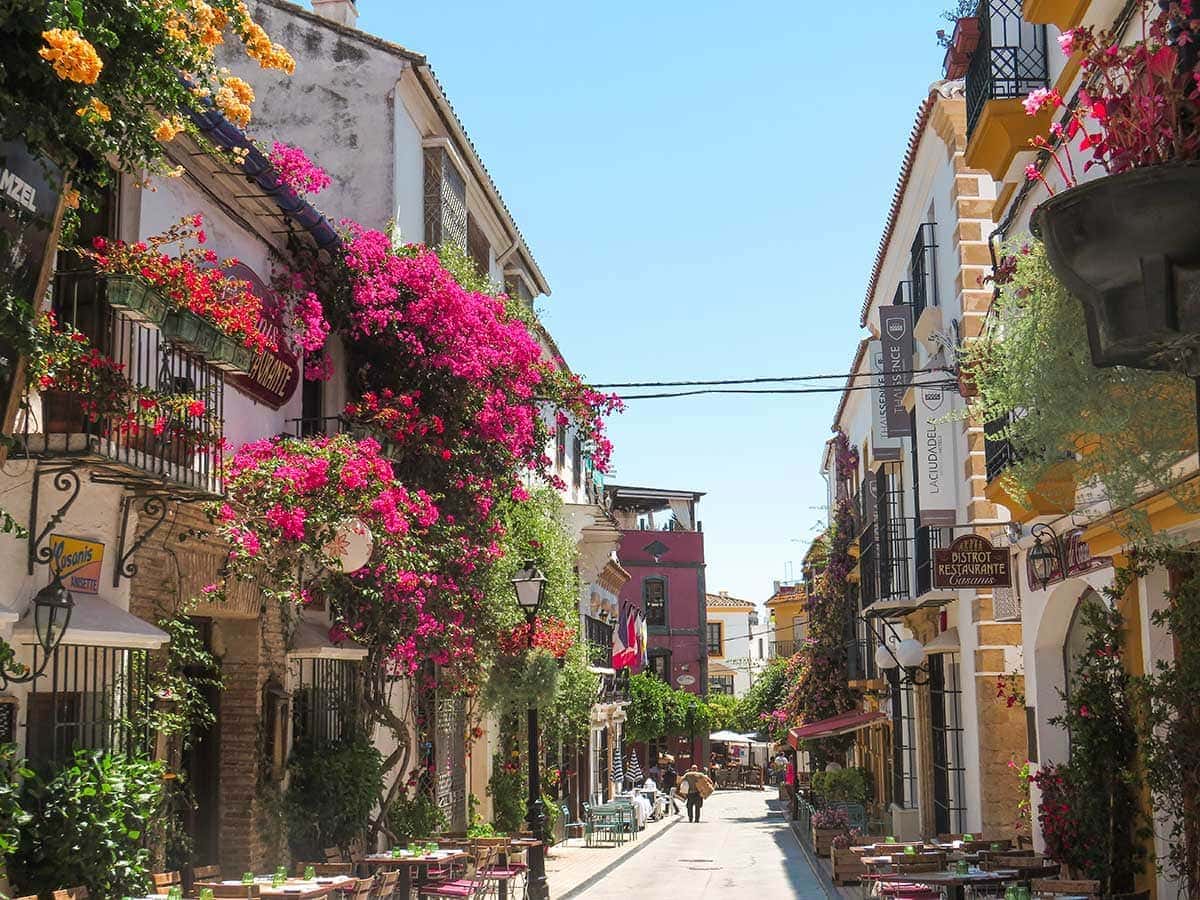
When you go on a short holiday or weekend getaway, you don’t think much about how friendly the locals are and making friends with them, mainly because you don’t have the time.
However, it’s a bit different if you choose to travel slower in a place or stay for a month. You want to choose a place in which the locals are friendly and helpful.
When you travel around Andalusia, you’ll soon realise how friendly people are (well, except for the odd person that you find anywhere). Even if you don’t speak Spanish, people will try to communicate with you and help you find the place you want to go next.
Although some people know English well, be aware that many locals don’t know how to speak English or their level is too basic to converse with you. But I can assure you that they’ll try to communicate with you, even if it involves pointing out things.
If you attempt to speak Spanish, they’ll absolutely appreciate the effort and praise you.
12. Incredible off-the-beaten-path destinations

Seville, Malaga and Granada are some of the most popular cities in Andalucia. However, there are many off-the-beaten-path destinations in this county too.
Cities like Huelva, Jaen and Almeria aren’t as popular as the ones I’ve mentioned before. Still, they have many unique activities to offer, and you’ll also have a very different but unique experience as these places aren’t touristy.
In addition to these cities, Andalucia is home to many pretty whitewashed towns, beautiful mountain destinations and pristine beaches that many tourists don’t know about.
I advise visiting big Andalusian cities because they’re incredible, but leave a few days to explore lesser-known destinations because they are worth visiting.
One of my favourite lesser-known villages is Frigiliana, a whitewashed village located in the mountains. From it, you can get incredible views of the Malaga coastline!
13. Home to important artists

If you’re into art, Andalucia is your place. Many well-known painters, artists and sculptors were born in the region. Pablo Picasso, Velázquez and Murillo to name a few.
The masterpieces of these artists are found in modern and interactive museums across Andalucia. Let’s say you’re going to travel to Malaga; you can’t miss Picasso Museum Malaga, take a photo with the Picasso statue in Plaza de la Merced, and see Picasso’s home.
Not only will you find traditional artists but modern artists work in museums too.
14. Good wines

Spain is a large producer of wine, and although you may have heard of La Rioja or Ribera del Duero wine, Southern Spain also has its own special wines.
Cadiz is probably one of the biggest wine producers in Andalucia, and it’s known for its sherry wines. So, if you love a glass of good wine, make sure to head to Cadiz and towns like Puerto de Santamaría and Jerez.
Other popular sweet wines in Andalucia are Pedro Ximenez and Moscatel, which come from La Axarquia in Malaga, and there are many good wineries in Malaga too.
However, no matter where you go in the region, you’ll easily find these wines everywhere.
15. Great surfing spots

If you’re passionate about surfing, you’ll be happy to hear that Andalusia has some incredible beaches where you can practise this sport.
The best place to surf in Andalucia is Costa del la Luz (Coast of Light), which represents the coast of Cadiz.
Within Cadiz, Tarifa is well-known for being a low-key hippie town with sandy beaches where the weather conditions are perfect for surfing. The town is considered the European capital of kite surfing!
This area is very windy, and waves are frequent, so expect to see many surfers.
If you’re a beginner and would love to improve your surfing skills, Tarifa is for you, too; there are good surfing lessons for all levels.
16. Lively nightlife

If you’re looking for a party destination or a fun place to visit with friends, choosing Andalucia is a great option because you won’t be disappointed with the nightlife.
Most Andalusian large cities offer a lively atmosphere to go party in, and this is even better during the summer months. However, some smaller towns, especially those in the coastal area, aren’t far behind and offer even better atmospheres.
Regardless of where you visit, you need to know that clubs and parties start later than in other European countries. Don’t plan to go out with your friends at 10 pm because you won’t find clubs open or they’ll be empty if you do.
Locals meet up at 10 pm to have a few tapas and drinks at bars and then make their way to the club around 12 pm, and this is even later in summer.
Parties are also long, and many people stay in the clubs until they close (some close at 6 or 7 am) and then have breakfast before heading home.
17. Fun waterparks and theme parks
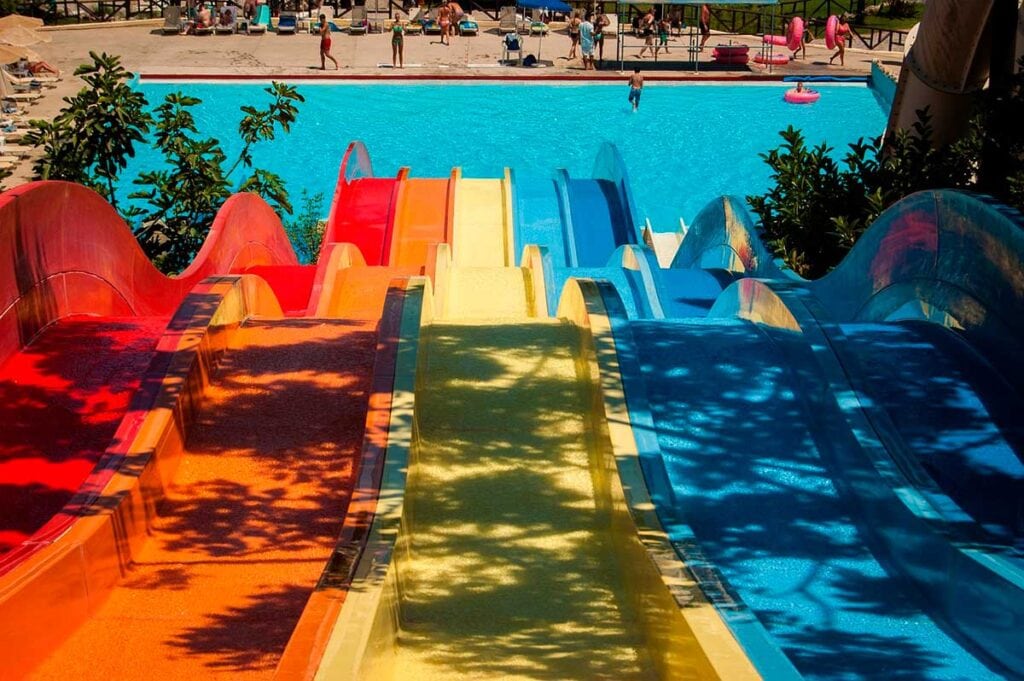
The south of Spain is a perfect holiday destination for families, home to numerous waterparks and theme parks.
Aqualand in Torremolinos, Malaga, is one of the best waterparks in Costa del Sol and Andalucia. Here, you’ll find fun attractions for all ages – tall slides, wave pool, black hole water slides and many more.
If you visit Sevilla, a theme park you want to check out is Isla Mágica, which isn’t very far from the city centre. The theme park has been open for 25 years, and the attractions won’t disappoint you. I remember visiting this theme park when I was a teenager and having lots of fun!
Theme parks and waterparks in Andalucia will guarantee everyone a half-day or full day of fun.
Frequently asked questions about Andalucia

What is Andalucia famous for?
If you’re asking yourself, “What is Andalusia known for?” it’s famous for flamenco music and dance, delicious food (including tapas), beautiful beaches, amazing festivals and historic landmarks like La Alhambra in Granada and Alcazar of Seville.
What is special about Andalucia?
What makes Andalucia unique is its culture and historical heritage. No matter what city or town you visit, you’ll find something that makes it unique – a natural landscape, a historical building, a traditional dish or an event.
When should I go to Andalucia?
It really depends on the activities you want to do during your holiday and the type of traveller you are.
If you want to lay on the beach or spend the day at the pool, travel to Andalucia in early or late summer when temperatures are good and there are fewer tourists. However, if you don’t mind about crowds, July and August are the hottest months.
If you’re looking for a trip packed with cultural and sightseeing activities or hiking, spring and autumn are the best times to visit Andalucia.
Last but not least, visiting Andalucia in winter is your best choice if you want a budget-friendly trip. Although temperatures are lower, you can still experience nice sunny days, or alternatively, you can enjoy a ski holiday in Sierra Nevada, Granada.
Conclusion on the reasons to visit Andalucia
Andalucia is a beautiful region with so many things to do! From visiting famous historic buildings like the Alhambra and enjoying the local cuisine to discovering hidden gems and going on scenic hikes.
Has any of these reasons convinced you to visit my region?
If you have any questions about visiting Andalucia, leave them in the comments below. But, if you would like a personalised itinerary for your trip to Southern Spain, check out my services for more information.
Safe adventures!
Cristina xx
Save these reasons to visit Andalucia on Pinterest for later


Don’t Forget…
Book your flight to your location through
Book your Accommodation through
Drive yourself around with ease using a local
Keep yourself safe and protected with
Book your tours and travel experiences with
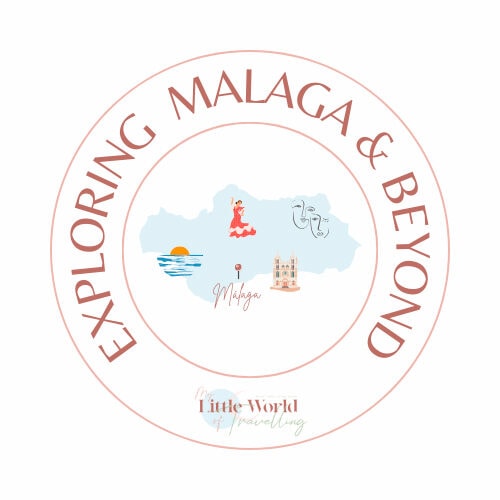

I would love to visit Andalucia! I love traveling in Spain, and I especially love to visit places with good food and beautiful beaches. Added to my bucket list!
Southern Spain sounds amazing. I love the idea of the beaches and I’d definitely visit to learn how to surf (or at least watch the surfers). Spain is at the top of my list and I will definitely be visiting the Andalucia area.
We are going to Spain on our next Europe trip. I have just added Andalucia to my list! So beautiful! Can’t wait!
Andalucia sounds amazing! I can’t wait to get back to Spain!